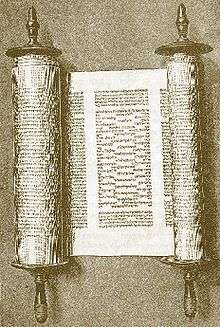Vayishlach
Vayishlach or Vayishlah (וַיִּשְׁלַח — Hebrew for "and he sent," the first word of the parashah) is the eighth weekly Torah portion (פָּרָשָׁה, parashah) in the annual Jewish cycle of Torah reading. It constitutes Genesis 32:4–36:43. The parashah has the most verses of any weekly Torah portion in the Book of Genesis (but not the most letters or words), and is made up of 7,458 Hebrew letters, 1,976 Hebrew words, and 153 verses, and can occupy about 237 lines in a Torah Scroll (סֵפֶר תּוֹרָה, Sefer Torah). (In the Book of Genesis, Parashah Miketz has the most letters, Parashah Vayeira has the most words, and Parashah Noach has an equal number of verses as Parashah Vayishlach.)[1] Jews read it the eighth Sabbath after Simchat Torah, in November or December.[2]
In the parashah, Jacob reconciles with Esau after wrestling with a "man," the prince Shechem rapes Dinah and her brothers sack the city of Shechem in revenge, and in the family's subsequent flight Rachel gives birth to Benjamin and dies in childbirth.
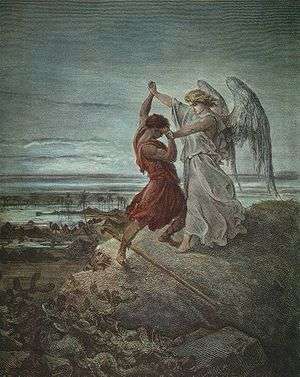
Readings
In traditional Sabbath Torah reading, the parashah is divided into seven readings, or עליות, aliyot. In the Masoretic Text of the Tanakh (Hebrew Bible), Parashah Vayishlach has six "open portion" (פתוחה, petuchah) divisions (roughly equivalent to a paragraph, often abbreviated with the Hebrew letter פ (peh)). The first open portion (פתוחה, petuchah) is further subdivided by two "closed portion" (סתומה, setumah) divisions (abbreviated with the Hebrew letter ס (samekh)). The first open portion (פתוחה, petuchah) spans the first four readings (עליות, aliyot) and part of the fifth reading (עליה, aliyah). The two closed portion (סתומה, setumah) divisions occur in the fourth reading (עליה, aliyah). The second and third open portion (פתוחה, petuchah) divides the fifth reading, (עליות, aliyot) and extends into the sixth. The fourth and fifth open portion (פתוחה, petuchah) divides the sixth reading (עליה, aliyah) and extends into the seventh. And the fifth and sixth open portion (פתוחה, petuchah) divisions divide the seventh reading (עליה, aliyah).[3]
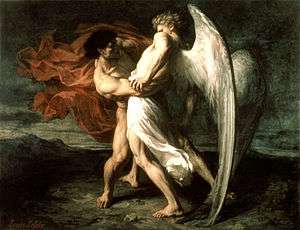
First reading — Genesis 32:4–13
In the first reading (עליה, aliyah), Jacob sent a message to Esau in Edom that he had stayed with Laban until then, had oxen, donkeys, flocks, and servants, and hoped to find favor in Esau's sight.[4] The messengers returned and greatly frightened Jacob with the report that Esau was coming to meet him with 400 men.[5] Jacob divided his camp in two, reasoning that if Esau destroyed one of the two, then the other camp could escape.[6] Jacob prayed to God, recalling that God had promised to return him whole to his country, noting his unworthiness for God's transformation of him from a poor man with just a staff to the leader of two camps, and prayed God to deliver him from Esau, as God had promised Jacob good and to make his descendants as numerous as the sand of the sea.[7] The first reading (עליה, aliyah) ends here.[8]

Second reading — Genesis 32:14–30
In the second reading (עליה, aliyah), Jacob assembled a present of hundreds of goats, sheep, camels, cattle, and donkeys to appease Esau, and instructed his servants to deliver them to Esau in successive droves with the message that they were a present from his servant Jacob, who followed behind.[9] As the presents went before him, Jacob took his wives, handmaids, children, and belongings over the Jabbok River, and then remained behind that night alone.[10] Jacob wrestled with a "man" until dawn, and when the "man" saw that he was not prevailing, he touched the hollow of Jacob's thigh and strained it.[11] The man asked Jacob to let him go, for the day was breaking, but Jacob would not let him go without a blessing.[12] The man asked Jacob his name, and when Jacob replied "Jacob," the man told him that his name would no more be Jacob, but Israel, for he had striven with God and with men and prevailed.[13] Jacob asked the "man" his name, but the "man" asked him why, and then blessed him.[14] The second reading (עליה, aliyah) ends here.[15]
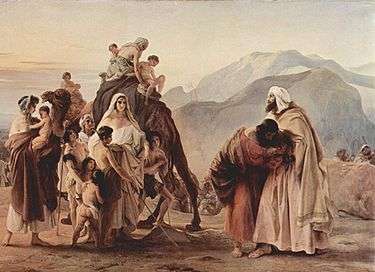
Third reading — Genesis 32:31–33:5
In the third reading (עליה, aliyah), Jacob named the place Peniel, saying that he had seen God face to face and lived.[16] And at sunrise, Jacob limped from the injury to his thigh.[17] Because of this, the Israelites do not eat the sinew of the vein that is the hollow of the thigh, because the man touched the hollow of Jacob's thigh.[18] When Jacob saw Esau coming with 400 men, he divided his family, putting the handmaids and their children foremost, Leah and her children next, and Rachel and Joseph at the back.[19] Jacob went before them, and bowed to the ground seven times as he approached his brother.[20] Esau ran to meet him, embraced him, and kissed him, and they wept.[21] Esau asked who the women and children were.[22] The third reading (עליה, aliyah) ends here.[23]
Fourth reading — Genesis 33:6–20
In the fourth reading (עליה, aliyah), Jacob told Esau that the women and children were his, and they all came to Esau and bowed down.[24] Esau asked what Jacob meant by all the livestock, and Jacob told him that he sought Esau's favor.[25] Esau said that he had enough, but Jacob pressed him to accept his present saying that seeing Esau's face was like seeing the face of God, and Esau took the gifts.[26] Esau suggested that Jacob and he travel together, but Jacob asked that Esau allow Jacob's party to travel more slowly, so as not to tax the young children and the flocks, until they came to Esau in Seir.[27] Esau offered to leave some of his men behind with Jacob, but Jacob declined.[28] So Esau left for Seir, and Jacob left for Sukkot (meaning "booths"), where he built a house and made booths for his cattle, thus explaining the place's name.[29] A closed portion (סתומה, setumah) ends here.[30]

In the continuation of the reading, Jacob came to Shechem, where he bought a parcel of ground outside the city from the children of Hamor for a hundred pieces of money.[31] Jacob erected an altar there, and called the place El-elohe-Israel.[32] The fourth reading (עליה, aliyah) and a closed portion (סתומה, setumah) end here with the end of chapter 33.[33]

Fifth reading — Genesis 34:1–35:11
In the fifth reading (עליה, aliyah), in chapter 34, when Dinah went out to see the daughters of the land, the prince of the land, Shechem the son of Hamor the Hivite, saw her and lay with her by force.[34] Shechem loved Dinah and asked Hamor to arrange that he might marry her.[35] Jacob heard that Shechem had defiled Dinah while Jacob's sons were in the field, and Jacob held his peace until they returned.[36] When Jacob's sons heard, they came in from the field very angry.[37] Hamor went out to Jacob and told him that Shechem longed for Dinah, and asked Jacob to give her to him for a wife, and to agree that their two people might intermarry and live and trade together.[38] And Shechem offered to give Jacob and his sons whatever they wanted as a bride price.[39] Jacob's sons answered with guile, saying that they could not give their sister to one not circumcised, and said that they would consent only on the condition that every man of the town became circumcised, and then the two people might intermarry and live together; otherwise they would leave.[40] Their words pleased Hamor and Shechem, and Shechem did so without delay, out of delight with Dinah.[41] Hamor and Shechem spoke to the men of the city in the city gate, saying that Jacob's family were peaceable, and advocated letting them dwell in the land, trade, and intermarry.[42] Hamor and Shechem reported that Jacob's people would only do so on the condition that every man of the town was circumcised, and they argued that the men do so, for Jacob's animals and wealth would add to the city's wealth.[43] The men heeded Hamor and Shechem, and every man of the city underwent circumcision.[44] On the third day, when the men of the city were in pain, Jacob's sons Simeon and Levi each took his sword, came upon the city with stealth, and killed all the men, including Hamor and Shechem, and took Dinah out of the city.[45] Jacob's sons looted the city, taking as booty their animals, their wealth, their wives, and their children.[46] Jacob told Simeon and Levi that they had made him odious to the inhabitants of the land, who would gather together against him and destroyed their family.[47] Simeon and Levi asked whether they were to allow someone to treat their sister as a prostitute.[48] The first open portion (פתוחה, petuchah) ends here with the end of chapter 34.[49]
As the reading continues in chapter 35, God told Jacob to move to Bethel, and make an altar there to God, who had appeared to him there when he first fled from Esau.[50] Jacob told his household to put away their idols, change their garments, and purify themselves for the trip to Bethel, and they gave Jacob all their idols and earrings and Jacob buried them under the terebinth by Shechem.[51] A terror of God fell upon the nearby cities so that the people did not pursue Jacob, and they journeyed to Luz, built an altar, and called the place El-beth-el.[52] Rebekah's nurse Deborah died, and they buried her below Beth-el under an oak they called Allon-bacuth.[53] And God appeared to Jacob again and blessed him, saying to him that his name would not be Jacob anymore, but Israel.[54] God told him to be fruitful and multiply, for nations and kings would descend from him.[55] The fifth reading (עליה, aliyah) ends here.[56]
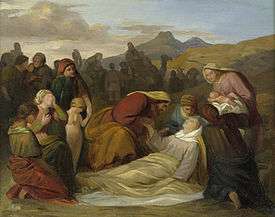
Sixth reading — Genesis 35:12–36:19
In the sixth reading (עליה, aliyah), God told Jacob that God would give Jacob and his descendants the land that God gave to Abraham and Isaac.[57] And Jacob set up a pillar of stone in the place, poured a drink-offering and oil on it, and called the place Bethel.[58] They left Bethel, and before they had come to Ephrath, Rachel went into a difficult labor.[59] The midwife told her not to fear not, for this child would also be a son for her.[60] And just before Rachel died, she named her son Ben-oni, but Jacob called him Benjamin.[61] They buried Rachel on the road to Ephrath at Bethlehem, and Jacob set up a pillar on her grave.[62] And Israel journeyed beyond Migdal-eder.[63] While Israel dwelt in that land, Reuben lay with Jacob's concubine Bilhah, and Israel heard of it.[64] The text then recounts Jacob's children born to him in Padan-aram.[65] Jacob came to Isaac at Hebron, Isaac died at the old age of 180, and Esau and Jacob buried him.[66] The second open portion (פתוחה, petuchah) ends here with the end of chapter 35.[67]
.jpg)
As the reading continues in chapter 36, the text recounts Esau's children.[68] Esau took his household, animals, and all his possessions that he had gathered in Canaan and went to a land apart from Jacob, in Edom, for their substance was too great for them to dwell together.[69] The text then recounts Esau's descendants, among whom were Amalek.[70] The sixth reading (עליה, aliyah) and the third open portion (פתוחה, petuchah) end here.[71]
Seventh reading — Genesis 36:20–43
In the seventh reading (עליה, aliyah), the text enumerates the descendants of Seir the Horite.[72] The fourth open portion (פתוחה, petuchah) ends here.[73]
In the continuation of the reading, the text lists the kings of Edom.[74] The maftir (מפטיר) reading of Genesis 36:40–43 that concludes the parashah lists the chiefs of Esau.[75] The seventh reading (עליה, aliyah), the fifth open portion (פתוחה, petuchah), and the parashah end here with the end of chapter 36.[76]
Readings according to the triennial cycle
Jews who read the Torah according to the triennial cycle of Torah reading read the parashah according to the following schedule:[77]
| Year 1 | Year 2 | Year 3 | |
|---|---|---|---|
| 2013–2014, 2016–2017, 2019–2020 . . . | 2014–2015, 2017–2018, 2020–2021 . . . | 2015–2016, 2018–2019, 2021–2022 . . . | |
| Reading | 32:4–33:20 | 34:1–35:15 | 35:16–36:43 |
| 1 | 32:4–6 | 34:1–4 | 35:16–26 |
| 2 | 32:7–9 | 34:5–12 | 35:27–29 |
| 3 | 32:10–13 | 34:13–17 | 36:1–8 |
| 4 | 32:14–22 | 34:18–23 | 36:9–19 |
| 5 | 32:23–30 | 34:24–31 | 36:20–30 |
| 6 | 32:31–33:5 | 35:1–11 | 36:31–39 |
| 7 | 33:6–20 | 35:12–15 | 36:40–43 |
| Maftir | 33:18–20 | 35:12–15 | 36:40–43 |
In inner-Biblical interpretation

The parashah has parallels or is discussed in these Biblical sources:[78]
Genesis chapter 32
The force of 400 men that Esau brought with him to meet Jacob in Genesis 32:7 exceeded the 318 men with whom Abraham defeated four kings and rescued Lot in Genesis 14:14–15.
Hosea 12:4–5, part of the haftarah for the parashah, interpreted Jacob's encounter with the angel. Hosea 12:4 says that Jacob by his strength strove with a godlike being. Hosea 12:5 says that Jacob strove with an angel and prevailed, and that the angel wept and supplicated Jacob. And Hosea 12:5 further says that at Bethel, Jacob found the angel and spoke with him there.
Genesis chapter 33
The 100 pieces of silver that Jacob paid the children of Hamor for the parcel of ground where he had spread his tent outside the city of Shechem in Genesis 33:18–19 compares with the 400 shekels of silver that Abraham paid Ephron the Hittite to buy the cave of Machpelah and adjoining land in Genesis 23:14–16; the 50 shekels of silver that King David paid Araunah the Jebusite for Araunah's threshing floor, oxen, and wood in 2 Samuel 24:18–24 (but 1 Chronicles 21:24 reports cost 600 shekels of gold); and the 17 shekels of silver that Jeremiah paid his cousin Hanamel for his field in Anathoth in the land of Benjamin in Jeremiah 23:7–9.
Genesis chapter 35
The report of Genesis 35:22 that Reuben lay with Bilhah, his father's concubine, and Israel heard of it, is echoed in Genesis 49:4, when Jacob recalled the incident and deprived Reuben of the blessing of the firstborn, because he went up on Jacob's bed and defiled it.
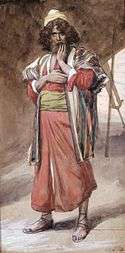
In classical rabbinic interpretation
The parashah is discussed in these rabbinic sources from the era of the Mishnah and the Talmud:[79]
Genesis chapter 32
The Rabbis of the Midrash questioned the wisdom of Jacob's decision to contact Esau in Genesis 32:4. Nahman ben Samuel compared the decision to waking a robber sleeping on a path to tell him of danger. The Rabbis envisioned that God asked Jacob: "Esau was going his own way, yet you sent to him?"[80]
The Rabbis of the Midrash deduced that the "messengers" of Genesis 32:4 were angels. The Rabbis reasoned that if (as Genesis Rabbah 59:10 taught[81]) an angel escorted Eliezer, who was just a servant of the house, how much the more would angels have accompanied Jacob, who was the beloved of the house. Rabbi Hama ben Hanina reasoned that if five angels appeared to Hagar, who was just Sarah's handmaid, how much more would angels appear to Jacob. And Rabbi Jannai reasoned that if three angels met Joseph (counting the three uses of "man" in Genesis 37:15–17), and he was the youngest of the ancestors of the 12 tribes of Israel, how much more would angels meet Jacob, who was the father of all 12.[82]
.jpg)
Judah haNasi once directed Rabbi Afes to write a letter in Judah's name to Emperor Antoninus. Rabbi Afes wrote: "From Judah the Prince to our Sovereign the Emperor Antoninus." Judah read the letter, tore it up, and wrote: "From your servant Judah to our Sovereign the Emperor Antoninus." Rabbi Afes remonstrated that Judah treated his honor too lightly. Judah replied that he was not better than his ancestor, who in Genesis 32:5 sent a message saying: "Thus says your servant Jacob."[83]
Rabbi Jacob bar Idi pointed out a contradiction between God's promise to protect Jacob in Genesis 28:15 and Jacob's fear in Genesis 32:8; Rabbi Jacob explained that Jacob feared that some sin might cause him to lose the protection of God's promise.[84]
Rabbi Eleazar taught that Obadiah hid 50 of 100 prophets of God in a cave in 1 Kings 18:4 because he learned the lesson of dividing his camp from Jacob's actions in Genesis 32:8–9. Rabbi Abbahu, however, said that it was because the cave could hold only 50.[85]
Reading Jacob's beseeching God in Genesis 32:10, "O God of my father Abraham, and God of my father Isaac," a Midrash asked whether Esau (from whom Jacob sought God's protection) could not have made the same claim for God's favor. The Midrash taught that God affords God's protection to those who choose the Patriarchs' ways and act as they did, and not to those who do not. (Thus the Midrash implied that Esau would not have been able to appeal for God's protection for his father's sake, for Esau had not emulated his father's deeds.)[86]
.jpg)
Reading Genesis 32:11, "I am too small (קָטֹנְתִּי, katonti) for all the mercies, and of all the truth, that You have shown to Your servant," Rabbi Abba bar Kahana interpreted the word קָטֹנְתִּי, katonti, to mean "I do not deserve them" (the kindnesses that God had shown Jacob), for "I am too small." Rabbi Levi interpreted the word קָטֹנְתִּי, katonti, to mean that Jacob did indeed deserve those kindnesses, but now "I am too small" (for God had already rewarded the merit that Jacob once had, and thus diminished the favor to which his merit may have entitled him, so now he feared that he might have no right to appeal for God's further assistance).[87]
Rabbi Yannai taught that when people expose themselves to danger and are saved by miracles, it is deducted from their merits and so they end up with less merit to their credit. Rabbi Hanin cited Genesis 32:11 to prove this, reading Jacob to say to God: "I am become diminished [that is, I have less merit to my credit] by reason of all the deeds of kindness and all the truth that You have shown to your servant."[88]
Rabbi Eliezer taught that the five Hebrew letters of the Torah that alone among Hebrew letters have two separate shapes (depending whether they are in the middle or the end of a word) — צ פ נ מ כ (Kh, M, N, P, Z) — all relate to the mystery of the redemption. With the letter kaph (כ), God redeemed Abraham from Ur of the Chaldees, as in Genesis 12:1, God says, "Get you (לֶךְ-לְךָ, lekh lekha) out of your country, and from your kindred ... to the land that I will show you." With the letter mem (מ), Isaac was redeemed from the land of the Philistines, as in Genesis 26:16, the Philistine king Abimelech told Isaac, "Go from us: for you are much mightier (מִמֶּנּוּ, מְאֹד, mimenu m'od) than we." With the letter nun (נ), Jacob was redeemed from the hand of Esau, as in Genesis 32:12, Jacob prayed, "Deliver me, I pray (הַצִּילֵנִי נָא, hazileini na), from the hand of my brother, from the hand of Esau." With the letter peh (פ), God redeemed Israel from Egypt, as in Exodus 3:16–17, God told Moses, "I have surely visited you, (פָּקֹד פָּקַדְתִּי, pakod pakadeti) and (seen) that which is done to you in Egypt, and I have said, I will bring you up out of the affliction of Egypt." With the letter tsade (צ), God will redeem Israel from the oppression of the kingdoms, and God will say to Israel, I have caused a branch to spring forth for you, as Zechariah 6:12 says, "Behold, the man whose name is the Branch (צֶמַח, zemach); and he shall grow up (יִצְמָח, yizmach) out of his place, and he shall build the temple of the Lord." These letters were delivered to Abraham. Abraham delivered them to Isaac, Isaac delivered them to Jacob, Jacob delivered the mystery of the Redemption to Joseph, and Joseph delivered the secret of the Redemption to his brothers, as in Genesis 50:24, Joseph told his brothers, "God will surely visit (פָּקֹד יִפְקֹד, pakod yifkod) you." Jacob's son Asher delivered the mystery of the Redemption to his daughter Serah. When Moses and Aaron came to the elders of Israel and performed signs in their sight, the elders told Serah. She told them that there is no reality in signs. The elders told her that Moses said, "God will surely visit (פָּקֹד יִפְקֹד, pakod yifkod) you" (as in Genesis 50:24). Serah told the elders that Moses was the one who would redeem Israel from Egypt, for she heard (in the words of Exodus 3:16), "I have surely visited (פָּקֹד פָּקַדְתִּי, pakod pakadeti) you." The people immediately believed in God and Moses, as Exodus 4:31 says, "And the people believed, and when they heard that the Lord had visited the children of Israel."[89]
A Midrash interpreted the words of Genesis 32:13, "I will surely do you good (הֵיטֵב אֵיטִיב, heiteiv eitiv)," (in which the verb is doubled) to mean both "I will do you good for your own sake" and "I will do you good for the sake of your fathers."[90]
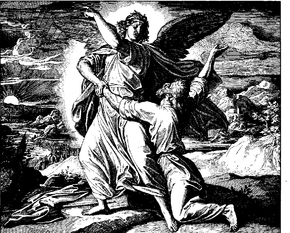
Rabbi Hama ben Hanina taught that the "man" who wrestled with Jacob in Genesis 32:25 was Esau's guardian angel, and that Jacob alluded to this when he told Esau in Genesis 33:10, "Forasmuch as I have seen your face, as one sees the face of Elohim, and you were pleased with me."[91]

The Pirke De-Rabbi Eliezer taught that Jacob wished to ford the Jabbok and was detained there by an angel, who asked Jacob whether Jacob had not told God (in Genesis 28:22), "Of all that you shall give me I will surely give a tenth to You." So Jacob gave a tenth of all the cattle that he had brought from Paddan-Aram. Jacob had brought some 5,500 animals, so his tithe came to 550 animals. Jacob again tried to ford the Jabbok, but was hindered again. The angel once again asked Jacob whether Jacob had not told God (in Genesis 28:22), "Of all that you shall give me I will surely give a tenth to You." The angel noted that Jacob had sons and that Jacob had not given a tithe of them. So Jacob set aside the four firstborn sons (whom the law excluded from the tithe) of each of the four mothers, and eight sons remained. He began to count from Simeon, and included Benjamin, and continued the count from the beginning. And so Levi was reckoned as the tenth son, and thus the tithe, holy to God, as Leviticus 27:32 says, "The tenth shall be holy to the Lord." So the angel Michael descended and took Levi and brought him up before the Throne of Glory and told God that Levi was God's lot. And God blessed him, that the sons of Levi should minister on earth before God (as directed in Deuteronomy 10:8) like the ministering angels in heaven.[92]
.jpg)
Chapter 7 of Tractate Chullin in the Mishnah, Tosefta, and Babylonian Talmud interpreted the laws of the prohibition of the sinew of the hip (the sciatic nerve, gid ha-nasheh) in Genesis 32:33.[93] The Mishnah taught that the prohibition against eating the sciatic nerve in Genesis 32:33 is in force both within the Land of Israel and outside it, both during the existence of the Temple and after it, and with respect to both consecrated and unconsecrated animals. It applies to both domesticated and wild animals, and to both the right and the left hip. But it does not apply to birds, because they have no spoon-shaped hip as the muscles upon the hip bone (femur) of a bird lie flat and are not raised and convex like those of cattle. It also applies to a live fetus found in a slaughtered animal, although Rabbi Judah said that it does not apply to a fetus. And the live fetus' fat is permitted. Rabbi Meir taught that one should not trust butchers to remove the sciatic nerve, but the Sages taught that one may trust butchers to remove the sciatic nerve as well as the fat that Leviticus 3:17 and 7:23 forbids.[94]
A Midrash interpreted Psalm 146:7, "The Lord lets loose the prisoners," to read, "The Lord permits the forbidden," and thus to teach that what God forbade in one case, God permitted in another. God forbade consuming the sciatic nerve in animals (in Genesis 32:33) but permitted it in fowl. God forbade the abdominal fat of cattle (in Leviticus 3:3), but permitted it in the case of beasts. God forbade eating meat without ritual slaughter (in Leviticus 17:1–4) but permitted it for fish. Similarly, Rabbi Abba and Rabbi Jonathan in the name of Rabbi Levi taught that God permitted more things than God forbade. For example, God counterbalanced the prohibition of pork (in Leviticus 11:7 and Deuteronomy 14:7–8) by permitting mullet (which some say tastes like pork).[95]
The Mishnah taught that one may send a thigh that still contains the sciatic nerve to a Gentile.[96] But Abahu taught that the Mishnah allowed a Jew to benefit only from the sciatic nerve of an animal that was not slaughtered according to the procedure prescribed by the Torah.[97]
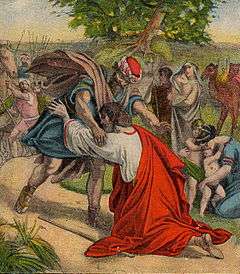
Genesis chapter 33
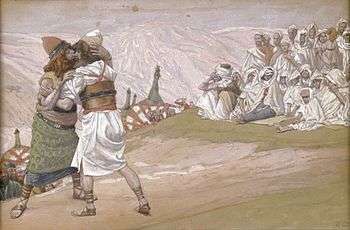
A Midrash noted that dots appear above the word "and kissed him" (וַיִּשָּׁקֵהוּ, vayishakeihu) in Genesis 33:4. Rabbi Simeon ben Eleazar taught that wherever one finds the plain writing exceeding the dotted letters, one must interpret the plain writing. But if the dotted letters exceed the plain writing, one must interpret the dotted letters. In Genesis 33:4, the plain writing equals in number the dotted letters, so Rabbi Simeon ben Eleazar taught that Genesis 33:4 conveys that Esau kissed Jacob with all his heart. Rabbi Jannai replied that if this were so, there would be no reason for dots to appear over the word. Rabbi Jannai taught that the dots mean that Esau wished to bite Jacob, but that Jacob's neck turned to marble and Esau's teeth were blunted and loosened. Hence the words "and they wept" in Genesis 33:4 reflect that Jacob wept because of his neck and Esau wept because of his teeth. Rabbi Abbahu in Rabbi Johanan's name adduced support for that conclusion from Song of Songs 7:5, which says: "Your neck is as a tower of ivory."[98]
Rabbi Haninah taught that Esau paid great attention to his parent (horo), his father, whom he supplied with meals, as Genesis 25:28 reports, "Isaac loved Esau, because he ate of his venison." Rabbi Samuel the son of Rabbi Gedaliah concluded that God decided to reward Esau for this. When Jacob offered Esau gifts, Esau answered Jacob in Genesis 33:9, "I have enough (רָב, rav); do not trouble yourself." So God declared that with the same expression that Esau thus paid respect to Jacob, God would command Jacob's descendants not to trouble Esau's descendants, and thus God told the Israelites in Deuteronomy 2:3, "You have circled this mountain (הָר, har) long enough (רַב, rav)."[99]
.jpg)
A Baraita taught that if an idol worshiper asks a Jew where the Jew is going, the Jew should tell the idolater that the Jew is heading towards a place beyond the Jew's actual destination, as Jacob told the wicked Esau. For in Genesis 33:14, Jacob told Esau, "Until I come to my lord to Seir," while Genesis 33:17 records, "And Jacob journeyed to Succot."[100] Reading the account in Genesis 33:14, Rabbi Abbahu said that he searched the whole Scriptures and did not find that Jacob ever went to Esau at Seir. Rabbi Abbahu asked whether it was then possible that Jacob, the truthful, could have deceived Esau. Rabbi Abbahu concluded that Jacob would indeed come to Esau, in the Messianic era, as Obadiah 1:21 reports, "And saviors shall come up on Mount Zion to judge the mount of Esau."[101]
Rabbi Judan the son of Rabbi Simon cited Joseph's Tomb as one of three places where Scripture reports purchases in the Land of Israel, thus providing a defense against the nations of the world who might taunt the Jews, saying that the Israelites had stolen the Land. The three instances are: the cave of Machpelah, of which Genesis 23:16 reports, "And Abraham weighed to Ephron the silver"; Joseph's Tomb, of which Genesis 33:19 reports, "And he bought the parcel of ground"; and the Temple, of which 1 Chronicles 21:25 reports, "So David gave to Ornan for the place six hundred shekels of gold."[102]

Genesis chapter 34
The Pirke De-Rabbi Eliezer expounded on "the daughters of the land" whom Genesis 34:1 reports Dinah went out to see. The Pirke De-Rabbi Eliezer taught that because Dinah abode in the tents and did not go into the street, Shechem brought dancing girls playing on pipes into the streets to entice Dinah out. When Dinah went to see why the girls were making merry, Shechem seized her.[103]
A Tanna taught in Rabbi Jose's name that Shechem was a place predestined for evil, for in Shechem Dinah was raped (as reported in Genesis 34:2), Joseph's brothers sold him (as reported in Genesis 37:17, Dothan being near Shechem), and the united kingdom of Israel and Judah was divided (as reported in 1 Kings 12:1).[104]
In Genesis 34:3, the heart is enticed. A Midrash catalogued the wide range of additional capabilities of the heart reported in the Hebrew Bible.[105] The heart speaks,[106] sees,[107] hears,[108] walks,[109] falls,[110] stands,[111] rejoices,[112] cries,[113] is comforted,[114] is troubled,[115] becomes hardened,[116] grows faint,[117] grieves,[118] fears,[119] can be broken,[120] becomes proud,[121] rebels,[122] invents,[123] cavils,[124] overflows,[125] devises,[126] desires,[127] goes astray,[128] lusts,[129] is refreshed,[130] can be stolen,[131] is humbled,[132] errs,[133] trembles,[134] is awakened,[135] loves,[136] hates,[137] envies,[138] is searched,[139] is rent,[140] meditates,[141] is like a fire,[142] is like a stone,[143] turns in repentance,[144] becomes hot,[145] dies,[146] melts,[147] takes in words,[148] is susceptible to fear,[149] gives thanks,[150] covets,[151] becomes hard,[152] makes merry,[153] acts deceitfully,[154] speaks from out of itself,[155] loves bribes,[156] writes words,[157] plans,[158] receives commandments,[159] acts with pride,[160] makes arrangements,[161] and aggrandizes itself.[162]

A Baraita reported that some said that Job lived in the time of Jacob and married Dinah, finding the connection in the use of the same word with regard to Job's wife in Job 2:10, "You speak as one of the impious women (נְּבָלוֹת, nebalot) speaks," and with regard to Dinah in Genesis 34:7, "Because he had committed a vile deed (נְבָלָה, nebalah) in Israel."[163]
The Mishnah deduced from Genesis 34:25 that the wound from a circumcision is still serious enough on the third day that one bathes a circumcised baby on that day even if it is the Sabbath.[164]
Reading the words of Genesis 34:30, "And Jacob said to Simeon and Levi: ‘You have troubled (עֲכַרְתֶּם, achartem) me,'" the Rabbis paraphrased: "The vat was clear, and you have muddied (עֲכַרְתֶּם, achartem) it."[165]
A Midrash read Judah's questions in Genesis 44:16, "What shall we speak or how shall we clear ourselves?" to hint to a series of sins. Judah asked, "What shall we say to my lord," with respect to the money that they retained after the first sale, the money that they retained after the second sale, the cup found in Benjamin's belongings, the treatment of Dinah in Genesis 34, the treatment of Bilhah in Genesis 35:22, the treatment of Tamar in Genesis 38, the sale of Joseph, allowing Simeon to remain in custody, and the peril to Benjamin.[166]
Genesis chapter 35
Rabbi Judan said that Jacob declared that Isaac blessed him with five blessings, and God correspondingly appeared five times to Jacob and blessed him (in Genesis 28:13–15, 31:3, 31:11–13, 35:1, and 35:9–12). And thus, in Genesis 46:1, Jacob "offered sacrifices to the God of his father Isaac," and not to the God of Abraham and Isaac. Rabbi Judan also said that Jacob wanted to thank God for permitting Jacob to see the fulfillment of those blessings. And the blessing that was fulfilled was that of Genesis 27:29, "Let people serve you, and nations bow down to you," which was fulfilled with regard to Joseph. (And thus Jacob mentioned Isaac then on going down to witness Joseph's greatness.)[167]
A Midrash taught that wherever there is idolatry, the Divine Presence (שכינה, Shechinah) will not dwell there. Once, however, people remove idolatry, the Divine Presence can appear. For as soon as Jacob removed all idolatry from his camp, as Genesis 35:2 reports, "Then Jacob said to his household . . . ‘Put away the strange gods that are among you,'" the Divine Presence immediately appeared to him, as Genesis 35:9 states, "God appeared again to Jacob."[168]
Rabbi Samuel bar Nahman interpreted the report of Genesis 35:8 that "Deborah, Rebekah's nurse died, and she was buried below Beth-el under the oak; and the name of it was called Allon-bacuth (אַלּוֹן בָּכוּת)." Rabbi Samuel bar Nahman taught that the name Allon-bacuth was Greek, in which allon means "another" (and thus the phrase could be read, "The name of it was called ‘another weeping'"). Rabbi Samuel bar Nahman deduced from this that while Jacob was mourning for Deborah, word reached him that his mother Rebekah had died. And thus Genesis 35:9 reports, "and God appeared to Jacob again . . . and blessed him." Rabbi Aha taught in Rabbi Jonathan's name that the blessing with which God blessed Jacob in Genesis 35:9 was the mourners' blessing of consolation and comfort.[169]
Similarly, the Rabbis taught that when Rebekah died, her bier was not taken out in public because of Esau. When Rebekah died, the people asked who would go out in front of her body, for Abraham had died, Isaac sat at home unable to see, Jacob had gone to Paddan Aram, and if Esau went out in front of her, people would curse her for raising such a person as Esau. So they took her bier out at night. Rabbi Jose bar Hanina taught that because they took her bier out at night, Scripture does not openly describe her death, but only alludes to it in Genesis 35:8. Rabbi Jose bar Hanina read Genesis 35:8 to say, "Deborah, Rebekah's nurse died, . . . and he called it the Weeping Oak," for they wept twice, for while Jacob was mourning for Deborah, the news of Rebekah's death reached him. And thus Genesis 35:9 reports, "and God appeared to Jacob again . . . and blessed him," because God blessed Jacob with the mourners' blessing.[170]
A Midrash interpreted Psalm 112:4, "To the upright He shines as a light in the darkness," to apply to the Patriarchs, "the upright," who saw the Divine Presence (שכינה, Shechinah) face to face (so to speak). The Midrash taught that we know this about Jacob from Genesis 35:9, which says, "God appeared to Jacob . . . and blessed him."[171]
The Tanna Devei Eliyahu taught that when God found Jacob declaring what was true, that God is God, and acknowledging this truth in his own heart, God revealed God's Self to him at once, as Genesis 35:9 reports, "God appeared to Jacob again, when he came from Paddan-aram, and blessed him." The Tanna Devei Eliyahu taught that this was an application of Ezekiel 16:8, "behold, your time was the time of love" (that was promised to those who proved their love for God).[172]
Reading the beginning of Genesis 35:9 as, "And God yet (עוֹד, od) appeared to Jacob," a Midrash taught that the word "yet" (עוֹד, od) signified that God would never again unite God's Name with another person. God is the God of Abraham, the God of Isaac, and the God of Jacob only.[173]
Reading the beginning of Genesis 35:9, "And God appeared to Jacob again (עוֹד, od)," Rabbi Jose bar Rabbi Hanina taught that "again" implies that God appeared this time as on the first occasion in Genesis 28:12–15. As on the first occasion, God spoke to Jacob through an angel, so on this occasion, it was through an angel. Alternatively, Rabbi Judan taught that the word "again" intimated that God would once again reveal God's self to Jacob, at Beersheba, on Jacob's descent into Egypt, in Genesis 46:1–4.[174]
.jpg)
Bar Kappara taught that whoever calls Abraham "Abram" violates a positive command. Rabbi Levi said that such a person violates both a positive and a negative command, as Genesis Genesis 17:5 says: "Neither shall your name any more be called Abram" — that is a negative command — and Genesis 17:5 also says: "But your name shall be called Abraham" — that is a positive command. The Midrash asked by analogy, if one calls Israel "Jacob" does one infringe a positive command? The Midrash answered that one does not, for it was taught that it was not intended that the name of Jacob should disappear, but that "Israel" should be his principal name and "Jacob" be his secondary name. Rabbi Zechariah interpreted it in Rabbi Aha's name as follows: In any event (in the words of Genesis 35:10), "Your name is Jacob," except that, "But Israel [too] shall be your name." Thus Jacob would be his principal name and "Israel" was added to it.[175]

Reading the words of Genesis 35:10, "but Israel shall be your name," the Tanna Devei Eliyahu taught that one should read not "Israel," but ish ra'ah El, "the man who saw God"; for all his actions were concentrated before him.[176]
Resh Lakish taught that the words "I am God Almighty" (אֵל שַׁדַּי, El Shaddai) in Genesis 35:11 mean, "I am He Who said to the world: 'Enough!'" (דַּי, Dai). Resh Lakish taught that when God created the sea, it went on expanding, until God rebuked it and caused it to dry up, as Nahum 1:4 says, "He rebukes the sea and makes it dry, and dries up all the rivers."[177]
.jpg)
A Midrash taught that of four who made vows, two vowed and profited, and two vowed and lost. The Israelites vowed and profited in Numbers 21:2–3, and Hannah vowed and profited in 1 Samuel 1:11–20. Jephthah vowed and lost in Judges 11:30–40, and Jacob vowed in Genesis 28:20 and lost (some say in the loss of Rachel in Genesis 35:18 and some say in the disgrace of Dinah in Genesis 34:2, for Jacob's vow in Genesis 28:20 was superfluous, as Jacob had already received God's promise, and therefore Jacob lost because of it).[178]
The Rabbis of the Talmud disputed whether Reuben sinned in Genesis 35:22. Rabbi Samuel bar Nahman said in Rabbi Jonathan's name that whoever maintains that Reuben sinned errs, for Genesis 35:22 says, "Now the sons of Jacob were twelve," teaching that they were all equal in righteousness. Rabbi Jonathan interpreted the beginning of Genesis 35:22, "and he lay with Bilhah his father's concubine," to teach that Reuben moved his father's bed from Bilhah’s tent to Leah's tent, and Scripture imputes blame to him as though he had lain with her. Similarly, it was taught in a Baraita that Rabbi Simeon ben Eleazar said that the righteous Reuben was saved from sin. Rabbi Simeon ben Eleazar asked how Reuben’s descendants could possibly have been directed to stand on Mount Ebal and proclaim in Deuteronomy 27:20, "Cursed be he who lies with his father's wife," if Reuben had sinned with Bilhah. Rabbi Simeon ben Eleazar interpreted Genesis 35:22, "and he lay with Bilhah his father's concubine," to teach that Reuben resented his mother Leah's humiliation, and did not want Rachel’s maid Bilhah to join Rachel as a rival to Leah. So Reuben moved her bed. Others told that Reuben moved two beds, one of the Divine Presence (שכינה, Shechinah) and the other of his father, as Jacob set a couch for the Divine Presence in each of his wives’ tents, and he spent the night where the Divine Presence came to rest. According to this view, one should read Genesis 49:4 to say, "Then you defiled my couch on which (the Divine Presence) went up." But the Gemara also reported disputes among the Tannaim on how to interpret the word "unstable (פַּחַז, pachaz)" in Genesis 49:4, where Jacob called Reuben, "unstable (פַּחַז, pachaz) as water." Several Rabbis read the word פַּחַז, pachaz, as an acronym, each letter indicating a word. Rabbi Eliezer interpreted Jacob to tell Reuben: "You were hasty (פ, paztah), you were guilty (ח, habtah), you disgraced (ז, zaltah)." Rabbi Joshua interpreted: "You overstepped (פ, pasatah) the law, you sinned (ח, hatata), you fornicated (ז, zanita)." Rabban Gamaliel interpreted: "You meditated (פ, pillaltah) to be saved from sin, you supplicated (ח, haltah), your prayer shone forth (ז, zarhah)." Rabban Gamaliel also cited the interpretation of Rabbi Eleazar the Modiite, who taught that one should reverse the word and interpret it: "You trembled (ז, zi'az'ata), you recoiled (ח, halita), your sin fled (פ, parhah) from you." Rava (or others say Rabbi Jeremiah bar Abba) interpreted: "You remembered (ז, zakarta) the penalty of the crime, you were grievously sick (ח, halita) through defying lust, you held aloof (פ, pirashta) from sinning."[179]
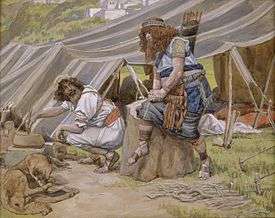
Considering the consequences of Reuben's infidelity with Jacob's concubine Bilhah in Genesis 35:22, Rabbi Eleazar contrasted Reuben's magnanimity with Esau's jealousy. As Genesis 25:33 reports, Esau voluntarily sold his birthright, but as Genesis 27:41 says, "Esau hated Jacob," and as Genesis 27:36 says, "And he said, ‘Is not he rightly named Jacob? for he has supplanted me these two times.'" In Reuben's case, Joseph took Reuben's birthright from him against his will, as 1 Chronicles 5:1 reports, "for as much as he defiled his father's couch, his birthright was given to the sons of Joseph." Nonetheless, Reuben was not jealous of Joseph, as Genesis 37:21 reports, "And Reuben heard it, and delivered him out of their hand."[180]
A Midrash taught that had Reuben not disgraced himself by his conduct with Bilhah in Genesis 35:22, his descendants would have been worthy of assuming the service of the Levites, for ordinary Levites came to replace firstborn Israelites, as Numbers 3:41 says, "And you shall take the Levites for Me, even the Lord, instead of all the firstborn among the children of Israel."[181]
.jpg)
The Rabbis taught that Reuben reasoned that Joseph had included Reuben with his brethren in Joseph's dream of the sun and the moon and the eleven stars in Genesis 37:9, when Reuben thought that he had been expelled from the company of his brothers on account of the incident of Genesis 35:22. Because Joseph counted Reuben as a brother, Reuben felt motivated to rescue Joseph. And since Reuben was the first to engage in life saving, God decreed that the Cities of Refuge would be set up first within the borders of the Tribe of Reuben in Deuteronomy 4:43.[182]
Rabbi Judah bar Simon taught that Moses later ameliorated the effects of Reuben’s sin in Genesis 35:22. Rabbi Judah bar Simon read Deuteronomy 28:6, "Blessed shall you be when you come in, and blessed shall you be when you go out," to refer to Moses. Rabbi Judah bar Simon read "when you come in" to refer to Moses, because when he came into the world, he brought nearer to God Batya the daughter of Pharaoh (who by saving Moses from drowning merited life in the World to Come). And "blessed shall you be when you go out" also refers to Moses, for as he was departing the world, he brought Reuben nearer to his estranged father Jacob, when Moses blessed Reuben with the words "Let Reuben live and not die" in Deuteronomy 33:6 (thus gaining for Reuben the life in the World to Come and thus proximity to Jacob that Reuben forfeited when he sinned against his father in Genesis 35:22 and became estranged from him in Genesis 49:4).[183]
The Mishnah taught that the story of Reuben's infidelity with Jacob's concubine Bilhah in Genesis 35:22 is read in the synagogue but not translated.[184]
Expanding on Genesis 35:27, the Pirke De-Rabbi Eliezer told that Jacob took his sons, grandsons, and wives, and went to Kiryat Arba to be near Isaac. Jacob found Esau and his sons and wives there dwelling in Isaac’s tents, so Jacob spread his tent apart from Esau’s. Isaac rejoiced at seeing Jacob. Rabbi Levi said that in the hour when Isaac was dying, he left his cattle, possessions, and all that he had to his two sons, and therefore they both loved him, and thus Genesis 35:29 reports, "And Esau and Jacob his sons buried him." The Pirke De-Rabbi Eliezer told that after that, Esau told Jacob to divide Isaac’s holdings into two portions, and Esau would choose first between the two portions as a right of being the older. Perceiving that Esau had his eye set on riches, Jacob divided the land of Israel and the Cave of Machpelah in one part and all the rest of Isaac’s holdings in the other part. Esau went to consult with Ishmael, as reported in Genesis 28:9. Ishmael told Esau that the Amorite and the Canaanite were in the land, so Esau should take the balance of Isaac’s holdings, and Jacob would have nothing. So Esau took Isaac’s wealth and gave Jacob the land of Israel and the Cave of Machpelah, and they wrote a perpetual deed between them. Jacob then told Esau to leave the land, and Esau took his wives, children, and all that he had, as Genesis 36:6 reports, "And Esau took his wives . . . and all his possessions which he had gathered in the land of Canaan, and went into a land away from his brother Jacob." As a reward, God gave Esau a hundred provinces from Seir to Magdiel, as Genesis 36:43 reports, and Magdiel is Rome. Then Jacob dwelt safely and in peace in the land of Israel.[185]
.jpg)
The Midrash Tehillim interpreted Psalm 18:41, "You have given me the necks of my enemies," to allude to Judah, because Rabbi Joshua ben Levi reported an oral tradition that Judah slew Esau after the death of Isaac. Esau, Jacob, and all Jacob’s children went to bury Isaac, as Genesis 35:29 reports, "Esau, Jacob, and his sons buried him," and they were all in the Cave of Machpelah sitting and weeping. At last Jacob’s children stood up, paid their respects to Jacob, and left the cave so that Jacob would not be humbled by weeping exceedingly in their presence. But Esau reentered the cave, thinking that he would kill Jacob, as Genesis 27:41 reports, "And Esau said in his heart: ‘Let the days of mourning for my father be at hand; then will I slay my brother Jacob.’" But Judah saw Esau go back and perceived at once that Esau meant to kill Jacob in the cave. Quickly Judah slipped after him and found Esau about to slay Jacob. So Judah killed Esau from behind. The neck of the enemy was given into Judah’s hands alone, as Jacob blessed Judah in Genesis 49:8 saying, "Your hand shall be on the neck of your enemies." And thus David declared in Psalm 18:41, "You have given me the necks of my enemies," as if to say that this was David’s patrimony, since Genesis 49:8 said it of his ancestor Judah.[186]
Genesis chapter 36
The Gemara taught that the use of the pronoun "he" (הוּא, hu) in an introduction, as in the words "this is (הוּא, hu) Esau" in Genesis 36:43, signifies that he was the same in his wickedness from the beginning to the end. Similar uses appear in Numbers 26:9 to teach Dathan and Abiram's enduring wickedness, in 2 Chronicles 28:22 to teach Ahaz's enduring wickedness, in Esther 1:1 to teach Ahasuerus's enduring wickedness, in 1 Chronicles 1:27 to teach Abraham's enduring righteousness, in Exodus 6:26 to teach Moses and Aaron's enduring righteousness, and in 1 Samuel 17:14 to teach David's enduring humility.[187]
Notwithstanding Esau's conflicts with Jacob in Genesis 25–33, a Baraita taught that the descendants of Esau's descendant Haman[188] studied Torah in Benai Berak.[189]
In medieval Jewish interpretation
The parashah is discussed in these medieval Jewish sources:[190]
Genesis chapters 25–33
Notwithstanding Esau's conflicts with Jacob in Genesis 25–33, the 14th-century Castilian commentator the Baal HaTurim, reading the Priestly Blessing of Numbers 6:24–26, noted that the numerical value (gematria) of the Hebrew word for "peace" (שָׁלוֹם, shalom) equals the numerical value of the word "Esau" (עֵשָׂו, Eisav). The Baal HaTurim concluded that this hints at the Mishnaic dictum (in Avot 4:15[191]) that one should always reach out to be the first to greet any person, even an adversary.[192]

Genesis chapter 35
Rashi explained Genesis 35:10, "Your name shall no longer be called Jacob (יַעֲקֹב)," to intimate a change from an expression of a man who comes with stealth and guile (עָקְבָה, akvah) to Israel (יִשְׂרָאֵל), a term denoting a prince (שַׂר, sar) and a chief.[193]

Maimonides taught that the encounter where Genesis 35:10 reports, "God said to him: ‘Your name is Jacob," is an instance of where a prophet reports the words of an angel without mentioning that they were perceived in a dream or vision, assuming that it is well known that prophecy can only originate in one of those two ways.[194]
In modern interpretation
The parashah is discussed in these modern sources:
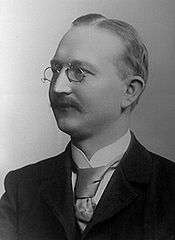
Genesis chapters 25–33
The early 20th century German scholar Hermann Gunkel wrote that the legend cycle of Jacob-Esau-Laban divided clearly into the legends (1) of Jacob and Esau (Genesis 25:19–34; 27:1–45; 27:46–28:9; 32:3–21; 33:1–17), (2) of Jacob and Laban (Genesis 29:1–30; 30:25–31:55), (3) of the origin of the twelve tribes (Genesis 29:31–30:24), and (4) of the origin of ritual observances (Genesis 28:10–22; 32:1–2, 22–32).[195]
Professor Walter Brueggemann, formerly of Columbia Theological Seminary, suggested a chiastic structure to the Jacob narrative (shown in the chart below), moving from conflict with Esau to reconciliation with Esau. Within that is conflict with Laban moving to covenant with Laban. And within that, at the center, is the narrative of births, in which the birth of Joseph (at Genesis 30:24) marks the turning point in the entire narrative, after which Jacob looks toward the Land of Israel and his brother Esau. In the midst of the conflicts are the two major encounters with God, which occur at crucial times in the sequence of conflicts.[196]
| Conflict with Esau | Reconciliation with Esau | |||||
| 25:19–34; 27:1–45; 27:46–28:9 | 32–33:17 | |||||
| Meeting at Bethel | Meeting at Penu'el | |||||
| 28:10–22 | 32:22–32 | |||||
| Conflict with Laban | Covenant with Laban | |||||
| 29:1–30 | 30:25–31:55 | |||||
| Births | ||||||
| 29:31–30:24 |
Acknowledging that some interpreters view Jacob's two encounters with God in Genesis 28:10–22 and 32–33:17 as parallel, Professor Terence Fretheim of the Luther Seminary argued that one may see more significant levels of correspondence between the two Bethel stories in Genesis 28:10–22 and 35:1–15, and one may view the oracle to Rebekah in Genesis 25:23 regarding "struggling" as parallel to Jacob's struggle at the Jabbok in Genesis 32–33:17. Fretheim concluded that these four instances of Divine speaking link to each other in complex ways.[197]
Commandments
According to Maimonides and Sefer ha-Chinuch, there is one negative commandment in the parashah:[198]
- Not to eat the sinew of the thigh (gid ha-nasheh).[199]
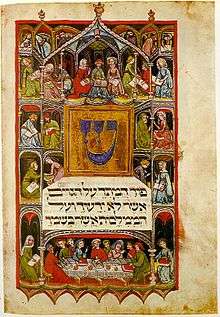
In the liturgy
The Passover Haggadah, in the concluding nirtzah section of the Seder, in a reference to Genesis 32:23–30, recounts how Israel struggled with an angel and overcame him at night.[200]
In the Blessing after Meals (Birkat Hamazon), at the close of the fourth blessing (of thanks for God's goodness), Jews allude to God's blessing of the Patriarchs described in Genesis 24:1, 27:33, and 33:11.[201]
In the morning blessings (Birkot hashachar), before the first recitation of the Shema, Jews refer to God's changing of Jacob's name to Israel in Genesis 35:10.[202]
Haftarah
The haftarah for the parashah is:
Connection to the parshah
The section from the Book of Hosea mentions the deeds of Jacob, including his wrestling with an angel.
The Book of Obadiah deals with God's wrath against the kingdom of Edom, who are descended from Esau. At times Esau's name is used as a synonym for the nation.
Further reading
Biblical
- Genesis 1:28 (be fruitful and multiply); 9:1, 7; (be fruitful and multiply); 48:7 (Rachel's death).
- Deuteronomy 2:4–5.
- Jeremiah 31:14 (31:15 in NJPS) (site of Rachel's death).
Classical rabbinic
- Mishnah: Shabbat 9:3, 19:3; Megillah 4:10; Chullin 7:1–6. Land of Israel, circa 200 C.E. Reprinted in, e.g., The Mishnah: A New Translation. Translated by Jacob Neusner, pages 190, 202, 323–24, 778–80. New Haven: Yale University Press, 1988. ISBN 0-300-05022-4.
- Tosefta: Berakhot 1:10, 4:16; Bikkurim 2:2; Megillah 3:35; Avodah Zarah 3:4; Chullin 7:1–8. Land of Israel, circa 300 C.E. Reprinted in, e.g., The Tosefta: Translated from the Hebrew, with a New Introduction. Translated by Jacob Neusner, volume 1, pages 6, 26, 348, 652; volume 2, pages 1269, 1393–95. Peabody, Massachusetts: Hendrickson Publishers, 2002. ISBN 1-56563-642-2.
- Jerusalem Talmud: Berakhot 17b, 83a, 84b; Sheviit 72a; Orlah 34a; Shabbat 72b, 73b, 107a; Eruvin 33a; Pesachim 13a; Taanit 30b; Sanhedrin 18a. Land of Israel, circa 400 CE. Reprinted in, e.g., Talmud Yerushalmi. Edited by Chaim Malinowitz, Yisroel Simcha Schorr, and Mordechai Marcus, volumes 1–2, 6b, 12, 14–15, 17–18, 25. Brooklyn: Mesorah Publications, 2005–2014.
- Genesis Rabbah 75:1–83:5. Land of Israel, 5th Century. Reprinted in, e.g., Midrash Rabbah: Genesis. Translated by H. Freedman and Maurice Simon. London: Soncino Press, 1939. ISBN 0-900689-38-2.
.jpg)
- Babylonian Talmud: Berakhot 4a, 12b; Shabbat 32a, 33b, 55b, 85a, 86a, 134b; Eruvin 53a; Pesachim 7b, 22a, 47b, 54a, 83b, 118b, 119b; Yoma 77b; Sukkah 5b, 39a; Beitzah 12a; Rosh Hashanah 26a; Taanit 20b, 27b; Megillah 11a, 17a, 18a, 21b, 25a–b; Chagigah 5b; Yevamot 65b; Nedarim 31b; Nazir 23a; Sotah 22b, 36b, 41b; Kiddushin 21b, 55a; Bava Kamma 41a, 92a; Bava Metzia 86b; Bava Batra 15b, 74b, 115b–16a, 123b; Sanhedrin 39b, 56a, 59a, 82b, 94a, 98b, 99b, 102a; Makkot 7b, 11a–b, 21b; Avodah Zarah 8b, 11b, 25b; Horayot 10b, 12a; Chullin 7b, 69a, 89b–103b, 134b, 137b; Keritot 21a; Niddah 63a. Babylonia, 6th Century. Reprinted in, e.g., Talmud Bavli. Edited by Yisroel Simcha Schorr, Chaim Malinowitz, and Mordechai Marcus, 72 volumes. Brooklyn: Mesorah Publications, 2006.
Medieval
- Solomon ibn Gabirol. A Crown for the King, 36:488–89. Spain, 11th Century. Translated by David R. Slavitt, pages 66–67. New York: Oxford University Press, 1998. ISBN 0-19-511962-2.
- Rashi. Commentary. Genesis 32–36. Troyes, France, late 11th Century. Reprinted in, e.g., Rashi. The Torah: With Rashi's Commentary Translated, Annotated, and Elucidated. Translated and annotated by Yisrael Isser Zvi Herczeg, volume 1, pages 359–407. Brooklyn: Mesorah Publications, 1995. ISBN 0-89906-026-9.
- Rashbam. Commentary on the Torah. Troyes, early 12th century. Reprinted in, e.g., Rabbi Samuel Ben Meir's Commentary on Genesis: An Annotated Translation. Translated by Martin I. Lockshin, pages 197–238. Lewiston, New York: The Edwin Mellen Press, 1989. ISBN 0-88946-256-9.
- Abraham ibn Ezra. Commentary on the Torah. Mid-12th century. Reprinted in, e.g., Ibn Ezra's Commentary on the Pentateuch: Genesis (Bereshit). Translated and annotated by H. Norman Strickman and Arthur M. Silver, pages 310–44. New York: Menorah Publishing Company, 1988. ISBN 0-932232-07-8.
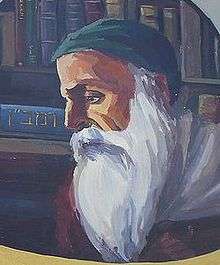
- Hezekiah ben Manoah. Hizkuni. France, circa 1240. Reprinted in, e.g., Chizkiyahu ben Manoach. Chizkuni: Torah Commentary. Translated and annotated by Eliyahu Munk, volume 1, pages 242–68. Jerusalem: Ktav Publishers, 2013. ISBN 978-1-60280-261-2.
- Nachmanides. Commentary on the Torah. Jerusalem, circa 1270. Reprinted in, e.g., Ramban (Nachmanides): Commentary on the Torah: Genesis. Translated by Charles B. Chavel, volume 1, pages 394–445. New York: Shilo Publishing House, 1971. ISBN 0-88328-006X.

- Zohar 1:165b–79a. Spain, late 13th Century. Reprinted in, e.g., The Zohar. Translated by Harry Sperling and Maurice Simon. 5 volumes. London: Soncino Press, 1934.
- Joshua ibn Shueib. "Sermon on Wa-Yishlah." Aragon, First half of 14th century. In Marc Saperstein. Jewish Preaching, 1200–1800: An Anthology, pages 137–55. New Haven: Yale University Press, 1989. ISBN 0-300-04355-4.
- Isaac ben Moses Arama. Akedat Yizhak (The Binding of Isaac). Late 15th century. Reprinted in, e.g., Yitzchak Arama. Akeydat Yitzchak: Commentary of Rabbi Yitzchak Arama on the Torah. Translated and condensed by Eliyahu Munk, volume 1, pages 209–29. New York, Lambda Publishers, 2001. ISBN 965-7108-30-6.
Modern
- Obadiah ben Jacob Sforno. Commentary on the Torah. Venice, 1567. Reprinted in, e.g., Sforno: Commentary on the Torah. Translation and explanatory notes by Raphael Pelcovitz, pages 174–97. Brooklyn: Mesorah Publications, 1997. ISBN 0-89906-268-7.
- Moshe Alshich. Commentary on the Torah. Safed, circa 1593. Reprinted in, e.g., Moshe Alshich. Midrash of Rabbi Moshe Alshich on the Torah. Translated and annotated by Eliyahu Munk, volume 1, pages 207–32. New York, Lambda Publishers, 2000. ISBN 965-7108-13-6.
.jpg)
- Avraham Yehoshua Heschel. Commentaries on the Torah. Cracow, Poland, mid 17th century. Compiled as Chanukat HaTorah. Edited by Chanoch Henoch Erzohn. Piotrkow, Poland, 1900. Reprinted in Avraham Yehoshua Heschel. Chanukas HaTorah: Mystical Insights of Rav Avraham Yehoshua Heschel on Chumash. Translated by Avraham Peretz Friedman, pages 81–88. Southfield, Michigan: Targum Press/Feldheim Publishers, 2004. ISBN 1-56871-303-7.
- Chaim ibn Attar. Ohr ha-Chaim. Venice, 1742. Reprinted in Chayim ben Attar. Or Hachayim: Commentary on the Torah. Translated by Eliyahu Munk, volume 1, pages 273–96. Brooklyn: Lambda Publishers, 1999. ISBN 965-7108-12-8.
- Johann Wolfgang von Goethe. Letter to Sara von Grothuss. 1812. Quoted in Solomon Goldman. In the Beginning, page 634. Harper, 1949. ("This foolish Dinah who runs about in the land.")
.jpg)
- Rumpelstiltskin. In Jacob Grimm & Wilhelm Grimm. Children's and Household Tales. Germany, 1812. Reprinted in, e.g., The Complete Brothers Grimm Fairy Tales. Edited by Lily Owens, pages 203–06. New York: Gramercy Books, 2006. ISBN 0-517-09293-X. (power of a true name).
- Emily Dickinson. Poem 59 (A little East of Jordan,). Circa 1859. In The Complete Poems of Emily Dickinson. Edited by Thomas H. Johnson, page 31. New York: Little, Brown & Co., 1960. ISBN 0-316-18414-4.
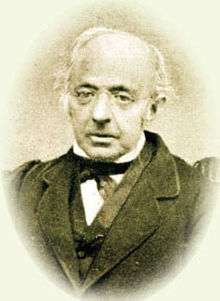
- Samuel David Luzzatto (Shadal). Commentary on the Torah. Padua, 1871. Reprinted in, e.g., Samuel David Luzzatto. Torah Commentary. Translated and annotated by Eliyahu Munk, volume 2, pages 310–54. New York: Lambda Publishers, 2012. ISBN 978-965-524-067-2.
- Yehudah Aryeh Leib Alter. Sefat Emet. Góra Kalwaria (Ger), Poland, before 1906. Excerpted in The Language of Truth: The Torah Commentary of Sefat Emet. Translated and interpreted by Arthur Green, pages 49–54. Philadelphia: Jewish Publication Society, 1998. ISBN 0-8276-0650-8. Reprinted 2012. ISBN 0-8276-0946-9.
- Abraham Isaac Kook. The Lights of Penitence, 14:40. 1925. Reprinted in Abraham Isaac Kook: the Lights of Penitence, the Moral Principles, Lights of Holiness, Essays, Letters, and Poems. Translated by Ben Zion Bokser, page 111. Mahwah, New Jersey: Paulist Press 1978. ISBN 0-8091-2159-X.
- Irving Fineman. Jacob, An Autobiographical Novel. New York: Random House, 1941.
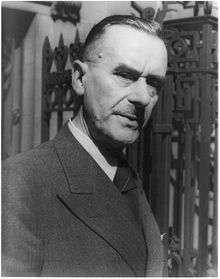
- Thomas Mann. Joseph and His Brothers. Translated by John E. Woods, pages 51–53, 64–65, 69–73, 77, 84–85, 100–03, 112–51, 155–56, 239, 294, 303–14, 326, 335, 399–400, 402–04, 426–27, 429, 432, 438, 446, 454, 491, 500–01, 507, 515, 563, 805, 917, 978–79. New York: Alfred A. Knopf, 2005. ISBN 1-4000-4001-9. Originally published as Joseph und seine Brüder. Stockholm: Bermann-Fischer Verlag, 1943.
- John R. Bartlett. "The Edomite King-list of Genesis XXXVI. 31–39 and I Chron. I. 43–50." The Journal of Theological Studies, volume 16 (1965): pages 301–14.
- Martin Kessler. "Genesis 34 — An Interpretation." Reformed Review, volume 19 (1965): pages 3–8.
- Frederick Buechner. The Magnificent Defeat, pages 10–18. Seabury Press, 1966. Reprinted San Francisco: Harper & Row, 1985. ISBN 0-06-061174-X.
- Delmore Schwartz. Jacob. In Selected Poems: Summer Knowledge, pages 233–35. New York: New Directions, 1967. ISBN 0-8112-0191-0.
- Bernhard W. Anderson. "An Exposition of Genesis 32:22–32: The Traveller Unknown." Australian Biblical Review, volume 17 (1969): pages 21–26.
- Robert Coote. "The Meaning of the Name Israel." Harvard Theological Review, volume 65 (1972): pages 137–46.
- Joe O. Lewis. "Gen 32:23–33, Seeing a Hidden God." Society of Biblical Literature Abstracts and Seminar Papers, volume 1 (1972): pages 449–57.
- Roland Barthes. "The Struggle with the Angel: Textual Analysis of Genesis 32:23–33." In Structural Analysis and Biblical Exegesis: Interpretational Essays. Translated by Alfred M. Johnson Jr., pages 21–33. Pittsburgh: Pickwick, 1974. ISBN 0915138026.
- Godfrey R. Driver. "Gen. Xxxvi 24: Mules or Fishes." Vetus Testamentum, volume 25 (1975): pages 109–10.
- Frank C. Fensham. "Gen XXXIV and Mari." Journal of Northwest Semitic Languages, volume 4 (1975): pages 15–38.

- Stanley Gevirtz. "Of Patriarchs and Puns: Joseph at the Fountain, Jacob at the Ford." Hebrew Union College Annual, volume 46 (1975): pages 33–54.
- Elie Wiesel. "And Jacob Fought the Angel." In Messengers of God: Biblical Portraits & Legends, pages 103–38. New York: Random House, 1976. ISBN 0-394-49740-6.
- Michael Fishbane. "Genesis 25:19–35:22/The Jacob Cycle." In Text and Texture: Close Readings of Selected Biblical Texts, pages 40–62. New York: Schocken Books, 1979. ISBN 0-8052-3724-0.
- John G. Gammie. "Theological Interpretation by Way of Literary and Tradition Analysis: Genesis 25–36." In Encounter with the Text: Form and History in the Hebrew Bible. Edited by Martin J. Buss, pages 117–34. Philadelphia: Fortress, 1979. ISBN 158983352X.
- Louis T. Brodie. "Jacob's Travail (Jer 30:1–13) and Jacob's Struggle (Gen 32:22–32): A Test Case for Measuring the Influence of the Book of Jeremiah on the Present Text of Genesis." Journal for the Study of the Old Testament, volume 19 (1981): pages 31–60.
- Nehama Leibowitz. Studies in Bereshit (Genesis), pages 345–93. Jerusalem: The World Zionist Organization, 1981. Reprinted as New Studies in the Weekly Parasha. Lambda Publishers, 2010. ISBN 965524038X.
- Nathaniel Wander. "Structure, Contradiction, and ‘Resolution' in Mythology: Father's Brother's Daughter Marriage and the Treatment of Women in Genesis 11–50." Journal of the Ancient Near Eastern Society, volume 13 (1981): pages 75–99.
- Walter Brueggemann. Genesis: Interpretation: A Bible Commentary for Teaching and Preaching, pages 260–87. Atlanta: John Knox Press, 1982. ISBN 0-8042-3101-X.
- Stephen A. Geller, "The Struggle at the Jabbok: The Uses of Enigma in a Biblical Narrative." Journal of the Ancient Near Eastern Society, volume 14 (1982): pages 37–60.
- Walter Brueggemann. Genesis: Interpretation: A Bible Commentary for Teaching and Preaching, pages 204–12, 260–87. Atlanta: John Knox Press, 1986. ISBN 0-8042-3101-X.
- Frederick Buechner. The Son of Laughter. New York: HarperCollins, 1993. ISBN 0-06-250116-X.
- Pat Schneider Welcoming Angels. In Long Way Home: Poems, page 90. Amherst, Massachusetts: Amherst Writers and Artists Press, 1993. ISBN 0-941895-11-4.
- Aaron Wildavsky. Assimilation versus Separation: Joseph the Administrator and the Politics of Religion in Biblical Israel, pages 6, 27–28. New Brunswick, New Jersey: Transaction Publishers, 1993. ISBN 1-56000-081-3.
- Judith S. Antonelli. "Dinah: Rape Victim." In In the Image of God: A Feminist Commentary on the Torah, pages 88–102. Northvale, New Jersey: Jason Aronson, 1995. ISBN 1-56821-438-3.
- Naomi H. Rosenblatt and Joshua Horwitz. Wrestling With Angels: What Genesis Teaches Us About Our Spiritual Identity, Sexuality, and Personal Relationships, pages 289–312. Delacorte Press, 1995. ISBN 0-385-31330-6.
- Avivah Gottlieb Zornberg. The Beginning of Desire: Reflections on Genesis, pages 216–42. New York: Image Books/Doubelday, 1995. ISBN 0-385-48337-6.
- Anita Diamant. The Red Tent. St. Martin's Press, 1997. ISBN 0-312-16978-7.
- Sorel Goldberg Loeb and Barbara Binder Kadden. Teaching Torah: A Treasury of Insights and Activities, pages 52–57. Denver: A.R.E. Publishing, 1997. ISBN 0-86705-041-1.
- Adele Reinhartz. "Why Ask My Name?" Anonymity and Identity in Biblical Narrative, pages 166–67. New York: Oxford University Press, 1998. ISBN 0-19-509970-2.
- Victor Hurowitz. "Whose Earrings Did Jacob Bury?" Bible Review, volume 17 (number 4) (August 2001): pages 31–33, 54.
- Lainie Blum Cogan and Judy Weiss. Teaching Haftarah: Background, Insights, and Strategies, pages 519–27, 560–68. Denver: A.R.E. Publishing, 2002. ISBN 0-86705-054-3.
- Rodger Kamenetz. "Naming the Angel." In The Lowercase Jew, page 39. Evanston, Illinois: Triquarterly Books/Northwestern University Press, 2003. ISBN 0-8101-5151-0.
- Jon D. Levenson. "Genesis." In The Jewish Study Bible. Edited by Adele Berlin and Marc Zvi Brettler, pages 66–74. New York: Oxford University Press, 2004. ISBN 0-19-529751-2.
- William H.C. Propp. "Exorcising Demons." Bible Review, volume 20 (number 5) (October 2004): pages 14–21, 47.
- Frank Anthony Spina. "Esau: The Face of God." In The Faith of the Outsider: Exclusion and Inclusion in the Biblical Story, pages 14–34. William B. Eerdmans Publishing Company, 2005. ISBN 0802828647.
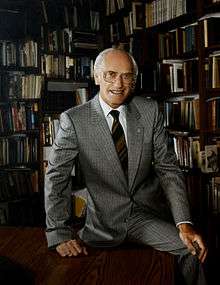
- W. Gunther Plaut. The Torah: A Modern Commentary: Revised Edition. Revised edition edited by David E.S. Stern, pages 218–43. New York: Union for Reform Judaism, 2006. ISBN 0-8074-0883-2.
- Suzanne A. Brody. Deborah and Encountering Dinah. In Dancing in the White Spaces: The Yearly Torah Cycle and More Poems, pages 69–70. Shelbyville, Kentucky: Wasteland Press, 2007. ISBN 1-60047-112-9.
- Esther Jungreis. Life Is a Test, pages 80–81. Brooklyn: Shaar Press, 2007. ISBN 1-4226-0609-0.
- Ian Goldberg. "Brothers of Nablus." In Terminator: The Sarah Connor Chronicles, season 2, episode 7. Burbank: Warner Bros. Television, 2008. (Shechem plot element).
- The Torah: A Women's Commentary. Edited by Tamara Cohn Eskenazi and Andrea L. Weiss, pages 183–208. New York: URJ Press, 2008. ISBN 0-8074-1081-0.
- Timothy Keller. "The End of Counterfeit Gods." In Counterfeit Gods: The Empty Promises of Money, Sex, and Power, and the Only Hope that Matters. Dutton Adult, 2009. ISBN 0525951369. (Jacob and Esau).
- Edward M. Kennedy. True Compass, page 58. New York: Twelve, 2009. ISBN 978-0-446-53925-8. ("Dad took precautions in booking several of us on two different ships, not wishing to lose all of us in a torpedo attack by one of the U-boats that now prowled the North Atlantic's depths.")

- Connie Wanek. "A Sighting." In On Speaking Terms. Copper Canyon Press, 2010. ISBN 1-55659-294-9. ("I will not let thee go except thou bless me.")
- Shmuel Herzfeld. "Outside the Box." In Fifty-Four Pick Up: Fifteen-Minute Inspirational Torah Lessons, pages 39–45. Jerusalem: Gefen Publishing House, 2012. ISBN 978-965-229-558-3.
- Joshua Kulp. "Conversion and the Jews: The lessons of the 'rape' of Dinah." The Jerusalem Report, volume 25 (number 18) (December 15, 2014): page 47.
See also
External links
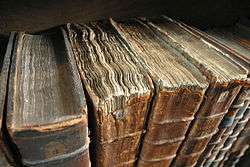
Texts
Commentaries
Notes
- ↑ "Bereshit Torah Stats". Akhlah Inc. Retrieved July 6, 2013.
- ↑ "Parashat Vayishlach". Hebcal. Retrieved November 26, 2014.
- ↑ See, e.g., The Schottenstein Edition Interlinear Chumash: Bereishis/Genesis. Edited by Menachem Davis, pages 186–216. Brooklyn: Mesorah Publications, 2006. ISBN 1-4226-0202-8.
- ↑ Genesis 32:4–6.
- ↑ Genesis 32:7–8.
- ↑ Genesis 32:8–9.
- ↑ Genesis 32:10–13.
- ↑ See, e.g., The Schottenstein Edition Interlinear Chumash: Bereishis/Genesis. Edited by Menachem Davis, page 189.
- ↑ Genesis 32:14–21.
- ↑ Genesis 32:22–25.
- ↑ Genesis 32:25–26.
- ↑ Genesis 32:27.
- ↑ Genesis 32:28–29.
- ↑ Genesis 32:30.
- ↑ See, e.g., The Schottenstein Edition Interlinear Chumash: Bereishis/Genesis. Edited by Menachem Davis, page 192.
- ↑ Genesis 32:31.
- ↑ Genesis 32:32.
- ↑ Genesis 32:33.
- ↑ Genesis 33:1–2.
- ↑ Genesis 33:3.
- ↑ Genesis 33:4.
- ↑ Genesis 33:5.
- ↑ See, e.g., The Schottenstein Edition Interlinear Chumash: Bereishis/Genesis. Edited by Menachem Davis, page 194.
- ↑ Genesis 33:6–7.
- ↑ Genesis 33:8.
- ↑ Genesis 33:9–11.
- ↑ Genesis 33:12–14.
- ↑ Genesis 33:15.
- ↑ Genesis 33:16–17.
- ↑ See, e.g., The Schottenstein Edition Interlinear Chumash: Bereishis/Genesis. Edited by Menachem Davis, page 196.
- ↑ Genesis 33:18–19.
- ↑ Genesis 33:20.
- ↑ See, e.g., The Schottenstein Edition Interlinear Chumash: Bereishis/Genesis. Edited by Menachem Davis, page 197.
- ↑ Genesis 34:1–2.
- ↑ Genesis 34:3–4.
- ↑ Genesis 34:5.
- ↑ Genesis 34:7.
- ↑ Genesis 34:6–10.
- ↑ Genesis 34:11–12.
- ↑ Genesis 34:13–17.
- ↑ Genesis 34:18–19.
- ↑ Genesis 34:20–21.
- ↑ Genesis 34:22–23.
- ↑ Genesis 34:24.
- ↑ Genesis 34:25–26.
- ↑ Genesis 34:27–29.
- ↑ Genesis 34:30.
- ↑ Genesis 34:31.
- ↑ See, e.g., The Schottenstein Edition Interlinear Chumash: Bereishis/Genesis. Edited by Menachem Davis, page 203.
- ↑ Genesis 35:1.
- ↑ Genesis 35:2–4.
- ↑ Genesis 35:5–7.
- ↑ Genesis 35:8.
- ↑ Genesis 35:9–10.
- ↑ Genesis 35:11.
- ↑ See, e.g., The Schottenstein Edition Interlinear Chumash: Bereishis/Genesis. Edited by Menachem Davis, page 206.
- ↑ Genesis 35:12.
- ↑ Genesis 35:14–15.
- ↑ Genesis 35:16.
- ↑ Genesis 35:17.
- ↑ Genesis 35:18.
- ↑ Genesis 35:19–20.
- ↑ Genesis 35:21.
- ↑ Genesis 35:21.
- ↑ Genesis 35:22–26.
- ↑ Genesis 35:27–29.
- ↑ See, e.g., The Schottenstein Edition Interlinear Chumash: Bereishis/Genesis. Edited by Menachem Davis.
- ↑ Genesis 36:1–5.
- ↑ Genesis 36:6–8.
- ↑ Genesis 36:9–19.
- ↑ See, e.g., The Schottenstein Edition Interlinear Chumash: Bereishis/Genesis. Edited by Menachem Davis, page 213.
- ↑ Genesis 36:20–30.
- ↑ See, e.g., The Schottenstein Edition Interlinear Chumash: Bereishis/Genesis. Edited by Menachem Davis, page 214.
- ↑ Genesis 36:31–39.
- ↑ Genesis 36:40–43.
- ↑ See, e.g., The Schottenstein Edition Interlinear Chumash: Bereishis/Genesis. Edited by Menachem Davis, page 216.
- ↑ See, e.g., "A Complete Triennial Cycle for Reading the Torah" (PDF). The Jewish Theological Seminary. Retrieved June 16, 2014.
- ↑ For more on inner-Biblical interpretation, see, e.g., Benjamin D. Sommer. "Inner-biblical Interpretation." In The Jewish Study Bible. Edited by Adele Berlin and Marc Zvi Brettler, pages 1829–35. New York: Oxford University Press, 2004. ISBN 0-19-529751-2.
- ↑ For more on classical rabbinic interpretation, see, e.g., Yaakov Elman. "Classical Rabbinic Interpretation." In The Jewish Study Bible. Edited by Adele Berlin and Marc Zvi Brettler, pages 1844–63.
- ↑ Genesis Rabbah 75:1–3. Land of Israel, 5th century. Reprinted in, e.g., Midrash Rabbah: Genesis. Translated by H. Freedman and Maurice Simon, volume 2, pages 689–91. London: Soncino Press, 1939. ISBN 0-900689-38-2.
- ↑ Genesis Rabbah 59:10. Reprinted in, e.g., Midrash Rabbah: Genesis. Translated by H. Freedman and Maurice Simon, volume 2, page 522.
- ↑ Genesis Rabbah 75:4. Reprinted in, e.g., Midrash Rabbah: Genesis. Translated by H. Freedman and Maurice Simon, volume 2, page 691.
- ↑ Genesis Rabbah 75:5. Reprinted in, e.g., Midrash Rabbah: Genesis. Translated by H. Freedman and Maurice Simon, volume 2, page 692.
- ↑ Babylonian Talmud Berakhot 4a. Babylonia, 6th century. Reprinted in, e.g., Koren Talmud Bavli: Berakhot. Commentary by Adin Even-Israel (Steinsaltz), volume 1, page 20. Jerusalem: Koren Publishers, 2012. ISBN 978-965-301-5630. Babylonian Talmud Sanhedrin 98b.
- ↑ Babylonian Talmud Sanhedrin 39b.
- ↑ Genesis Rabbah 76:4. Reprinted in, e.g., Midrash Rabbah: Genesis. Translated by H. Freedman and Maurice Simon, volume 2, page 704.
- ↑ Genesis Rabbah 76:5. Reprinted in, e.g., Midrash Rabbah: Genesis. Translated by H. Freedman and Maurice Simon, volume 2, page 704.
- ↑ Babylonian Talmud Shabbat 32a. Reprinted in, e.g., Koren Talmud Bavli: Shabbat · Part One. Commentary by Adin Even-Israel (Steinsaltz), volume 2, page 149. Jerusalem: Koren Publishers, 2012. ISBN 978-965-301-564-7.
- ↑ Pirke De-Rabbi Eliezer, chapter 48. Early 9th century. Reprinted in, e.g., Pirke de Rabbi Eliezer. Translated and annotated by Gerald Friedlander, pages 383–85. London, 1916. Reprinted New York: Hermon Press, 1970. ISBN 0-87203-183-7.
- ↑ Genesis Rabbah 76:7. Reprinted in, e.g., Midrash Rabbah: Genesis. Translated by H. Freedman and Maurice Simon, volume 2, page 706.
- ↑ Genesis Rabbah 77:3. Reprinted in, e.g., Midrash Rabbah: Genesis. Translated by H. Freedman and Maurice Simon, volume 2, pages 711–13. See also Genesis Rabbah 78:3. Reprinted in, e.g., Midrash Rabbah: Genesis. Translated by H. Freedman and Maurice Simon, volume 2, pages 716–18.
- ↑ Pirke de Rabbi Eliezer, chapter 37. Reprinted in, e.g., Pirke de Rabbi Eliezer. Translated and annotated by Gerald Friedlander, pages 283–94.
- ↑ Mishnah Chullin 7:1–6. Land of Israel, circa 200 CE. Reprinted in, e.g., The Mishnah: A New Translation. Translated by Jacob Neusner, pages 778–80. New Haven: Yale University Press, 1988. ISBN 0-300-05022-4. Tosefta Chullin 7:1–8. Land of Israel, circa 300 CE. Reprinted in, e.g., The Tosefta: Translated from the Hebrew, with a New Introduction. Translated by Jacob Neusner, volume 2, pages 1393–95. Peabody, Massachusetts: Hendrickson Publishers, 2002. ISBN 1-56563-642-2. Babylonian Talmud Chullin 89b–103b.
- ↑ Mishnah Chullin 7:1. Reprinted in, e.g., The Mishnah: A New Translation. Translated by Jacob Neusner, pages 778–79. Babylonian Talmud Chullin 89b.
- ↑ Leviticus Rabbah 22:10. Land of Israel, 5th century. Reprinted in, e.g., Midrash Rabbah: Leviticus. Translated by H. Freedman and Maurice Simon, volume 4, pages 288–89. London: Soncino Press, 1939. ISBN 0-900689-38-2.
- ↑ Mishnah Chullin 7:2. Reprinted in, e.g., The Mishnah: A New Translation. Translated by Jacob Neusner, page 779. Babylonian Talmud Chullin 93b.
- ↑ Jerusalem Talmud Pesachim 13a. Land of Israel, circa 400 CE. Reprinted in, e.g., Talmud Yerushalmi. Elucidated by Zev Dickstein, Chaim Ochs, Gershon Hoffman, Mendy Wachsman, Abba Zvi Naiman, and Avrohom Neuberger; edited by Chaim Malinowitz, Yisroel Simcha Schorr, and Mordechai Marcus, volume 18, page 13a4. Brooklyn: Mesorah Publications, 2011. ISBN 1-4226-0250-8.
- ↑ Genesis Rabbah 78:9. Reprinted in, e.g., Midrash Rabbah: Genesis. Translated by H. Freedman and Maurice Simon, volume 2, page 721.
- ↑ Deuteronomy Rabbah 1:17. Land of Israel, 9th century. Reprinted in, e.g., Midrash Rabbah: Deuteronomy. Translated by Harry Freedman and Maurice Simon, volume 7, page 20. London: Soncino Press, 1939. ISBN 0-900689-38-2.
- ↑ Babylonian Talmud Avodah Zarah 25b.
- ↑ Genesis Rabbah 78:14. Reprinted in, e.g., Midrash Rabbah: Genesis. Translated by H. Freedman and Maurice Simon, volume 2, page 725.
- ↑ Genesis Rabbah 79:7. Reprinted in, e.g., Midrash Rabbah: Genesis. Translated by H. Freedman and Maurice Simon, volume 2, page 732.
- ↑ Pirke De-Rabbi Eliezer, chapter 38. Reprinted in, e.g., Pirke de Rabbi Eliezer. Translated and annotated by Gerald Friedlander, page 287.
- ↑ Babylonian Talmud Sanhedrin 102a.
- ↑ Ecclesiastes Rabbah 1:36 [1:16:1]. 6th–8th centuries. Reprinted in, e.g., Midrash Rabbah: Ruth/Ecclesiastes. Translated by Maurice Simon, volume 8, pages 46–49. London: Soncino Press, 1939. ISBN 0-900689-38-2.
- ↑ Ecclesiastes 1:16.
- ↑ Ecclesiastes 1:16.
- ↑ 1 Kings 3:9.
- ↑ 2 Kings 5:26.
- ↑ 1 Samuel 17:32.
- ↑ Ezekiel 22:14.
- ↑ Psalm 16:9.
- ↑ Lamentations 2:18.
- ↑ Isaiah 40:2.
- ↑ Deuteronomy 15:10.
- ↑ Exodus 9:12.
- ↑ Deuteronomy 20:3.
- ↑ Genesis 6:6.
- ↑ Deuteronomy 28:67.
- ↑ Psalm 51:19.
- ↑ Deuteronomy 8:14.
- ↑ Jeremiah 5:23.
- ↑ 1 Kings 12:33.
- ↑ Deuteronomy 29:18.
- ↑ Psalm 45:2.
- ↑ Proverbs 19:21.
- ↑ Psalm 21:3.
- ↑ Proverbs 7:25.
- ↑ Numbers 15:39.
- ↑ Genesis 18:5.
- ↑ Genesis 31:20.
- ↑ Leviticus 26:41.
- ↑ Isaiah 21:4.
- ↑ 1 Samuel 4:13.
- ↑ Song 5:2.
- ↑ Deuteronomy 6:5.
- ↑ Leviticus 19:17.
- ↑ Proverbs 23:17.
- ↑ Jeremiah 17:10.
- ↑ Joel 2:13.
- ↑ Psalm 49:4.
- ↑ Jeremiah 20:9.
- ↑ Ezekiel 36:26.
- ↑ 2 Kings 23:25.
- ↑ Deuteronomy 19:6.
- ↑ 1 Samuel 25:37.
- ↑ Joshua 7:5.
- ↑ Deuteronomy 6:6.
- ↑ Jeremiah 32:40.
- ↑ Psalm 111:1.
- ↑ Proverbs 6:25.
- ↑ Proverbs 28:14.
- ↑ Judges 16:25.
- ↑ Proverbs 12:20.
- ↑ 1 Samuel 1:13.
- ↑ Jeremiah 22:17.
- ↑ Proverbs 3:3.
- ↑ Proverbs 6:18.
- ↑ Proverbs 10:8.
- ↑ Obadiah 1:3.
- ↑ Proverbs 16:1.
- ↑ 2 Chronicles 25:19.
- ↑ Babylonian Talmud Bava Batra 15b.
- ↑ Mishnah Shabbat 9:3, 19:3. Reprinted in, e.g., The Mishnah: A New Translation. Translated by Jacob Neusner, pages 190, 202. Babylonian Talmud Shabbat 86a, 134b. Reprinted in, e.g., Koren Talmud Bavli: Shabbat · Part Two. Commentary by Adin Even-Israel (Steinsaltz), volume 3, pages 23, 293. Jerusalem: Koren Publishers, 2012. ISBN 978-965-301-565-4.
- ↑ Genesis Rabbah 80:12. Reprinted in, e.g., Midrash Rabbah: Genesis. Translated by H. Freedman and Maurice Simon, volume 2, page 744.
- ↑ Genesis Rabbah 92:9. Reprinted in, e.g., Midrash Rabbah: Genesis. Translated by H. Freedman and Maurice Simon, volume 2, page 855.
- ↑ Genesis Rabbah 94:5. Reprinted in, e.g., Midrash Rabbah: Genesis. Translated by H. Freedman and Maurice Simon, volume 2, pages 871–73.
- ↑ Midrash HaGadol. Yemen, 13th century. Reprinted in Menahem M. Kasher. Torah Sheleimah, 35, 41. Jerusalem, 1927. Reprinted in Encyclopedia of Biblical Interpretation. Translated by Harry Freedman, volume 4, pages 193–94. New York: American Biblical Encyclopedia Society, 1965.
- ↑ Genesis Rabbah 81:5. Reprinted in, e.g., Midrash Rabbah: Genesis. Translated by H. Freedman and Maurice Simon, volume 2, page 750. See also Genesis Rabbah 82:3. Reprinted in, e.g., Midrash Rabbah: Genesis. Translated by H. Freedman and Maurice Simon, volume 2, page 754. (mourners' blessing).
- ↑ Midrash Tanhuma Ki Teitzei 4. 6th–7th centuries. Reprinted in, e.g., Metsudah Midrash Tanchuma. Translated and annotated by Avraham Davis; edited by Yaakov Y.H. Pupko, volume 8 (Devorim), pages 233–34. Monsey, New York: Eastern Book Press, 2006.
- ↑ Midrash HaGadol, Vayyera. Reprinted in Menahem M. Kasher. Torah Sheleimah, 35, 41. Reprinted in Encyclopedia of Biblical Interpretation. Translated by Harry Freedman, volume 4, page 194.
- ↑ Tanna Devei Eliyahu. Seder Eliyyahu Rabbah, chapter (27) 25. 10th century. Reprinted in, e.g., Tanna Debe Eliyyahu: The Lore of the School of Elijah. Translated by William G. Braude and Israel J. Kapstein, page 302. Philadelphia: Jewish Publication Society, 1981. ISBN 0-8276-0634-6.
- ↑ Tanhuma Yashan Vayyishlah 27. 6th century. Reprinted in Menahem M. Kasher. Torah Sheleimah, 35, 42–45. Reprinted in Encyclopedia of Biblical Interpretation. Translated by Harry Freedman, volume 4, page 194. See also Genesis Rabbah 82:3. Reprinted in, e.g., Midrash Rabbah: Genesis. Translated by H. Freedman and Maurice Simon, volume 2, page 754. (attributing the teaching to Rabbi Abba ben Kahana).
- ↑ Genesis Rabbah 82:3. Reprinted in, e.g., Midrash Rabbah: Genesis. Translated by H. Freedman and Maurice Simon, volume 2, pages 753–54.
- ↑ Genesis Rabbah 78:3. Reprinted in, e.g., Midrash Rabbah: Genesis. Translated by H. Freedman and Maurice Simon, volume 2, page 717.
- ↑ Tanna Devei Eliyahu, Seder Eliyyahu Rabbah 28. Reprinted in, e.g., Menahem M. Kasher. Torah Sheleimah, 35, 53. Reprinted in Encyclopedia of Biblical Interpretation. Translated by Harry Freedman, volume 4, page 195.
- ↑ Babylonian Talmud Chagigah 12a.
- ↑ Genesis Rabbah 70:3. Reprinted in, e.g., Midrash Rabbah: Genesis. Translated by H. Freedman and Maurice Simon, volume 2, page 637.
- ↑ Babylonian Talmud Shabbat 55b. Reprinted in, e.g., Koren Talmud Bavli: Shabbat. Commentary by Adin Even-Israel (Steinsaltz), volume 2, pages 264–65.
- ↑ Babylonian Talmud Berakhot 7b. Reprinted in, e.g., Koren Talmud Bavli: Berakhot. Commentary by Adin Even-Israel (Steinsaltz), volume 1, page 44.
- ↑ Numbers Rabbah 6:3. 12th century. Reprinted in, e.g., Midrash Rabbah: Numbers. Translated by Judah J. Slotki, volume 5. London: Soncino Press, 1939. ISBN 0-900689-38-2.
- ↑ Genesis Rabbah 84:15. Reprinted in, e.g., Midrash Rabbah: Genesis. Translated by H. Freedman and Maurice Simon, volume 2, pages 780–81.
- ↑ Deuteronomy Rabbah 7:5. Reprinted in, e.g., Midrash Rabbah: Deuteronomy. Translated by Harry Freedman and Maurice Simon, volume 7, page 136. See also See Genesis Rabbah 98:4. Reprinted in, e.g., Midrash Rabbah: Genesis. Translated by Harry Freedman and Maurice Simon, volume 2, pages 948–52. (restoration of Reuben).
- ↑ Mishnah Megillah 4:10. Reprinted in, e.g., The Mishnah: A New Translation. Translated by Jacob Neusner, pages 323–24. Babylonian Talmud Megillah 25a. Reprinted in, e.g., Koren Talmud Bavli: Taanit · Megillah. Commentary by Adin Even-Israel (Steinsaltz), volume 12, page 361. Jerusalem: Koren Publishers, 2014. ISBN 978-965-301-573-9.
- ↑ Pirke De-Rabbi Eliezer, chapter 38. Reprinted in, e.g., Pirke de Rabbi Eliezer. Translated and annotated by Gerald Friedlander, pages 289–91.
- ↑ Midrash Tehillim 18:32. 10th century. Reprinted in, e.g., The Midrash on the Psalms. Translated by William G. Braude, volume 1, pages 265–66. New Haven: Yale University Press, 1959. LCCN 58-6535.
- ↑ Babylonian Talmud Megillah 11a.
- ↑ Genesis 36:12 identifies Amalek as Esau's grandson. Numbers 24:7 identifies the Amalekites with the Agagites. Esther 3:1 identifies Haman as an Agagite.
- ↑ Babylonian Talmud Sanhedrin 96b. Reprinted in, e.g., Talmud Bavli. Elucidated by Asher Dicker, Joseph Elias, and Dovid Katz; edited by Yisroel Simcha Schorr and Chaim Malinowitz, volume 49, page 96b3. Brooklyn: Mesorah Publications, 1995. ISBN 1-57819-628-0.
- ↑ For more on medieval Jewish interpretation, see, e.g., Barry D. Walfish. "Medieval Jewish Interpretation." In The Jewish Study Bible. Edited by Adele Berlin and Marc Zvi Brettler, pages 1876–1900.
- ↑ Avot 4:15. Reprinted in, e.g., The Mishnah: A New Translation. Translated by Jacob Neusner, page 683.
- ↑ Jacob ben Asher (The Baal Ha-Turim). Rimze Ba'al ha-Turim. Early 14th century. Reprinted in, e.g., Baal Haturim Chumash: Bamidbar/Numbers. Translated by Eliyahu Touger; edited and annotated by Avie Gold, volume 4, page 1419. Brooklyn: Mesorah Publications, 2003. ISBN 1-57819-131-9.
- ↑ Rashi. Commentary. chapter 35. Troyes, France, late 11th century. Reprinted in, e.g., Rashi. The Torah: With Rashi's Commentary Translated, Annotated, and Elucidated: Bereishis/Genesis. Translated and annotated by Yisrael Isser Zvi Herczeg, volume 1, page 392. Brooklyn: Mesorah Publications, 1995. ISBN 0-89906-026-9.
- ↑ Maimonides. The Guide for the Perplexed, part 2, chapter 41. Cairo, Egypt, 1190. Reprinted in, e.g., Moses Maimonides. The Guide for the Perplexed. Translated by Michael Friedländer, page 235. New York: Dover Publications, 1956. ISBN 0-486-20351-4.
- ↑ Hermann Gunkel. Genesis: Translated and Explained. Göttingen: Vandenhoeck & Ruprecht, 1901. Introduction reprinted as The Legends of Genesis: The Biblical Saga and History. Translated by William H. Carruth. 1901. Reprinted, e.g., with an introduction by William F. Albright, page 45. New York: Schocken Books 1964; Reissue edition, 1987. ISBN 080520086X. See also Walter Brueggemann. Genesis: Interpretation: A Bible Commentary for Teaching and Preaching, page 205. Atlanta: John Knox Press, 1982. ISBN 0-8042-3101-X. (identifying verses of these legends).
- ↑ Walter Brueggemann. Genesis: Interpretation: A Bible Commentary for Teaching and Preaching, pages 211–13. See also Gary A. Rendsburg. The Great Courses: The Book of Genesis: Part 2, page 13. Chantilly, Virginia: The Teaching Company, 2006. ISBN 1598031902. (similar chiastic structure).
- ↑ Terence E. Fretheim. "The Book of Genesis." In The New Interpreter's Bible. Edited by Leander E. Keck, volume 1, page 519. Nashville: Abingdon Press, 1994. ISBN 0-687-27814-7.
- ↑ Maimonides. Mishneh Torah, Negative Commandment 183. Cairo, Egypt, 1170–1180. Reprinted in Maimonides. The Commandments: Sefer Ha-Mitzvoth of Maimonides. Translated by Charles B. Chavel, volume 2, pages 180–81. London: Soncino Press, 1967. ISBN 0-900689-71-4. Sefer HaHinnuch: The Book of [Mitzvah] Education. Translated by Charles Wengrov, volume 1, pages 89–90. Jerusalem: Feldheim Publishers, 1991. ISBN 0-87306-179-9.
- ↑ Genesis 32:33.
- ↑ Menachem Davis. The Interlinear Haggadah: The Passover Haggadah, with an Interlinear Translation, Instructions and Comments, page 108. Brooklyn: Mesorah Publications, 2005. ISBN 1-57819-064-9. Joseph Tabory. JPS Commentary on the Haggadah: Historical Introduction, Translation, and Commentary, page 123. Philadelphia: Jewish Publication Society, 2008. ISBN 978-0-8276-0858-0.
- ↑ The Schottenstein Edition Siddur for the Sabbath and Festivals with an Interlinear Translation. Edited by Menachem Davis, page 172. Brooklyn: Mesorah Publications, 2002. ISBN 1-57819-697-3. Reuven Hammer. Or Hadash: A Commentary on Siddur Sim Shalom for Shabbat and Festivals, page 342. New York: The Rabbinical Assembly, 2003. ISBN 0-916219-20-8.
- ↑ The Schottenstein Edition Siddur for the Sabbath and Festivals with an Interlinear Translation. Edited by Menachem Davis, page 212. Reuven Hammer. Or Hadash: A Commentary on Siddur Sim Shalom for Shabbat and Festivals, page 66.
